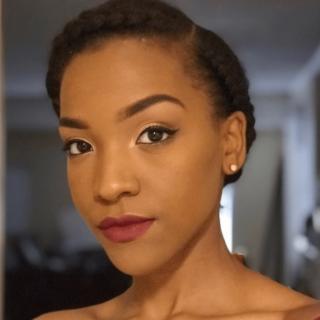Featured photo: Authentic Tiffany lamps grace the center of the gallery (photo by Michaela Ratliff)
They look like the real thing.
In the latest exhibit at the Reynolda House Museum of American Art, forgeries are embraced and scrutinized.
Tiffany Glass: Painting with Color and Light is organized by the Neustadt Collection of Tiffany Glass in Queens, NY — a traveling exhibition that has made stops in Cincinnati and Kalamazoo, Mich on its way to Winston-Salem, where the exhibit will reside until Nov. 29. The forgeries show viewers how to differentiate between authentic Tiffany lamps and imitations.
“They’re just not as delicate or the colors don’t mesh as well as the real Tiffany lamps,” says Curator Alison Slaby.
Another way to determine a forgery is to carefully examine the individual pieces of glass, its texture and overall craftsmanship.

The bases of some Tiffany lamps are designed to look like tree trunks, emphasizing flower petals that commonly appear in the shades. The lines representing the roots on the forged lamps appear chunky and rushed, not as soft as the authentic ones. The colors of the glass also appear streaky and uneven.
Louis Comfort Tiffany, son of Tiffany & Co. founder Charles Lewis Tiffany, began his art career as a painter and became interested in glassmaking in the late 19th Century. He dominated the Gilded Age by founding his own glassmaking studio to create objects for the home and average consumer. His use of opalescent glass — glass that is already colored rather than stained — and his lavish craftsmanship made his products sought after by the wealthy.
“They were very much luxury objects,” Slaby says. “They were expensive, but they were handcrafted in this really renowned studio.”
In addition to lamps, Tiffany made windows featuring nature scenes. Another Tiffany Studios designer, Frederick Wilson, created windows with ecclesiastical subjects.
In the center of the exhibition lies a leaded glass lampshade-making demonstration. Although the materials are reproduced, the tools are similar to the ones used at Tiffany Studios.
After sketching a watercolor design, the artist would etch the design into a wooden mold, then cut and fit individual pieces of glass into it, wrapping each with copper foil. Finally, the artist would solder the pieces together with heat against the mold, and seal it with a bronze or gold finish.
The radiance of the lamps and windows through the dim lighting in the Mary and Charlie Babcock Wing Gallery give the room a warm glow.
“I like to say it’s Autumn aglow at Reynolda House,” says Slaby.
The gallery is adorned with portraits and brief biographies of contributing designers, including Agnes Northrop, the most well-known woman in Tiffany Studios.

“She was renowned at Tiffany Studios for having her own studio,” Slaby says. “Most of the people who worked at Tiffany Studios worked in these big, collective workspaces.”
Northrop shared a love of nature with Tiffany and used it to influence her designs. This is apparent when viewing the star of the exhibit, “Grape Vine and Lemon Tree with Trellis”. It’s the largest window in the exhibit and is made from leaded glass. The foliage is saturated with more than 20 shades of green, making the yellow lemons combined with the purple grapes stand out against the trellis and tangled vines.
Clara Driscoll was the overseer of the women’s glass-cutting department. She created a blue and green dragonfly lampshade made from leaded glass and metal filigree that appears in the exhibit.

“We have these wonderful iridescent wings of the dragonflies,” Slaby says.
The wings appear silver but seem to change colors as they are viewed from different angles.
A portrait of Louis Comfort Tiffany hangs on the wall perpendicular to a row of lamps lined in the center of the gallery, almost as if he is admiring the work produced by his company. The craftsman ruled the home decor industry by creating quality items for those dying to live in the lap of luxury. A forgery could never compete.
Tickets to the exhibit can be purchased on Reynolda House Museum of American Art’s website.
UPDATE: An earlier version of this story misidentified the century in which Louis Tiffany worked. The story has been updated with accurate information.
Join the First Amendment Society, a membership that goes directly to funding TCB‘s newsroom.
We believe that reporting can save the world.
The TCB First Amendment Society recognizes the vital role of a free, unfettered press with a bundling of local experiences designed to build community, and unique engagements with our newsroom that will help you understand, and shape, local journalism’s critical role in uplifting the people in our cities.
All revenue goes directly into the newsroom as reporters’ salaries and freelance commissions.


Good story, but Louis Comfort Tiffany began working in the late-19th century–not the 18th century as the story states. He died in the 20th century in 1933.
Thanks for the fact check!